Ho Chi Minh City, formerly known as Saigon, is the largest city and economic heart of Vietnam. In the past it was the capital of the French protectorate of Cochinchina (1862–1954) and of South Vietnam (1954–75). The French colonist has built many architecture works in this city which still exist until now. Let’s check out the most notable French colonial buildings in Saigon.
Saigon Central Post Office
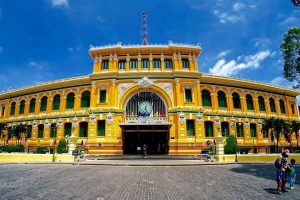
Today Central Post Office is one of the most famous historical buildings in Ho Chi Minh city. It is a great combination between European and Asian designs.
The post office features a bright yellow exterior framed with white trim. There is a giant clock hanged above the main gate. Below the clock is the construction year number “1886 – 1891”. Above the international phone booths, you can see two large maps: Telegraphic lines of southern Vietnam and Cambodia and Saigon and its surroundings. On the wall at the end of the hall is a portrait of President Ho Chi Minh, the great leader of Vietnam.
The Saigon Central Post Office is a wonderful place to marvel at extraordinary colonial architecture. The city has maintained this exquisite building and it is still in full operation.
Notre Dame Cathedral
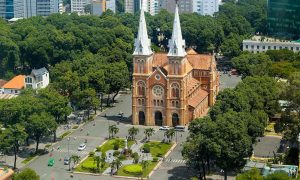
Notre Dame Cathedral Saigon is one of the oldest churches and the top famous attractions in Ho Chi Minh City. Its beautiful Gothic style impress not only domestic but also international tourists. All building materials were imported from France. The outside wall of the cathedral was built with bricks from Toulouse. Notre Dame Cathedral is one of the city’s popular attractions, offering visitors the chance to learn about the city’s history, culture, and architecture.
Saigon Opera House
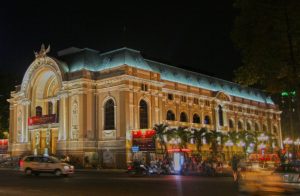
Saigon Opera House was built in 1897 and finished in 1900. It is used as a venue for cultural, artistic and entertainment events. The building has classical French architecture with many beautiful decorations. It provides a capacity of up to 1,800 seats and is considered as one of the largest and most beautiful theaters in Southeast Asia.
Ho Chi Minh City Museum
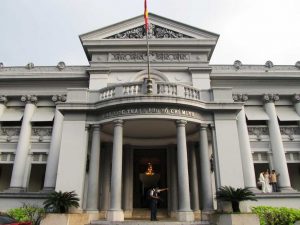
Museum of Ho Chi Minh City is a place that mainly focuses on the display and preservation of historical, cultural and artistic relics of Ho Chi Minh City. The museum has a collection of about 300,000 documents, artifacts, pictures and documents. Main topics are for examples the city’s historical development, national culture, architecture and contemporary art.
Vietnam History Museum
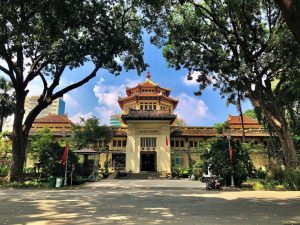
In Vietnam History Museum many artifacts, documents and images about the history of Vietnam from prehistoric times to the founding of the communist party are displayed. The museum was established in 1979 and is built in a modern architectural style with 18 galleries and more than 40,000 documents, artifacts, images, texts and maps.
Coming here, visitors can learn about the history of Vietnamese feudal dynasties, the wars in Vietnam against the French and the Americans, the revolution, the process of renovation and integration of the country over the years…
Ben Thanh Market
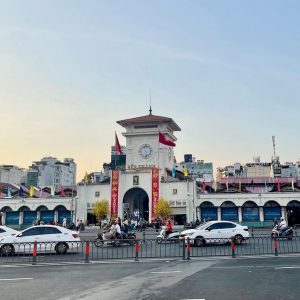
Ben Thanh Market is a place for trading and exchanging goods with about 1,500 stalls. It has 4 main doors bordering 4 streets and 12 side doors in 4 directions. This is one of the remaining architectural works from the French colonial period and has become a symbol of the city.
Ho Chi Minh City Museum of Fine Arts
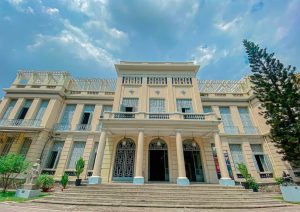
Ho Chi Minh City Museum of Fine Arts is a museum specializing in fine art, established in 1987. The museum displays and preserves many works of Vietnamese and international painters, sculptors, photographers around the world. The museum is divided into several galleries. The works here range in age from medieval to modern, diverse in genres, styles and materials.
Ho Chi Minh City Hall
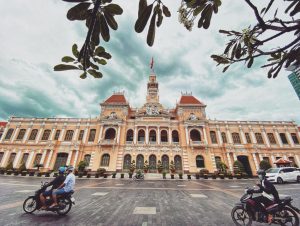
Ho Chi Minh City Hall, officially called the Ho Chi Minh City People’s Committee Head Office was built from 1898 to 1909, designed by a French architect Femand Gardès. The building has a tall bell tower in the middle, which represents a popular architectural style in the North of France. It is a mixture of many European architectural styles such as Renaissance, Baroque and Rococo relief decoration. In 2020, the building is ranked as a national monument and one of the most popular city landmarks.
Independence Palace
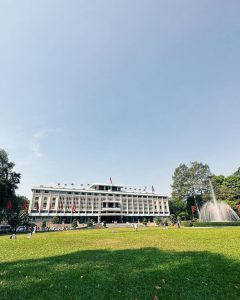
The Independence Palace, or Reunification Palace, is a historical site that used to be the residence and workplace of the South Vietnamese president during Vietnam war. Currently, the palace serves as a museum for visitors. Visitors can explore the halls, meeting rooms and residences of the president’s family, and learn about the palace’s history through exhibits, artifacts and multimedia presentations.


